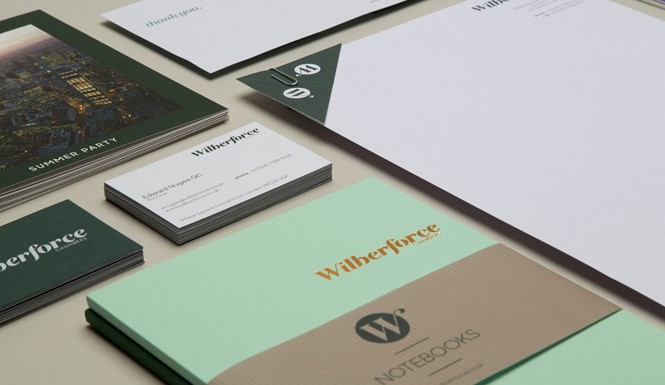Creativity in legal sector can help build stronger brands

In the legal sector, brand is often an afterthought. It’s a letterheading or a keychain or a company coffee mug. Only recently has it begun to be seen as the face of the organisation; something that conveys the purpose and reputation of a legal group. But, there’s still a long way to go in terms of understanding.
One such organisation, Wilberforce Chambers, a group of barristers operating out of the same chambers, didn’t put much meaning into its previous brand. “Nobody knew what it was for or what it meant,” said Gary Wheat, MD of Liverpool-based brand consultancy Legal Brands about the Wilberforce logo. Wheat spoke at the Transform Conference earlier this month, leading one of the sector-based streams, this one on law.
He then discussed the challenges involved in helping a group of 80 or so barristers, and their clerks, that a more modern brand would help them promote their services. “If they want to be perceived as modern and progressive, they have to position themselves as such,” he said, despite reluctance from some individuals to the change. Eventually, the new brand and website were rolled out, offering a modern, yet classic visual identity and positioning the chambers as client-friendly and more human.
That challenge exists across the sector. Without a coherent approach to brand, Wheat said, the business’ growth, differentiation, internal culture and success will suffer. Yet, one of the big challenges – aside from stakeholder buy-in – in the legal sector is to identify what makes each organisation unique. And, legal firms are by nature risk averse. The challenge for solicitors, then, has been to encourage them to dare to be different, said Richard Gerrard, director of business development and marketing at Carter-Ruck.
“If you think law firms sound dysfunctional and behind the curve,” added Jemma Tagg, director of strategic development at 20 Essex St chambers, “wait til you hear about barristers.” She pointed out the challenge inherent to barristers: most chambers consist of a a large group of self-employed individuals sharing a single space. Unlike the partnership model solicitors use – which has its own issues regarding stakeholder buy-in – chambers are akin to “promoting 70 different personal brands, but at the same time promot[ing] a collective identity,” Tagg said.
But, the problems are not insurmountable, the speakers all said. If individuals and companies are encouraged to think differently, embrace their fears and be creative.
For full conference coverage, click here.












